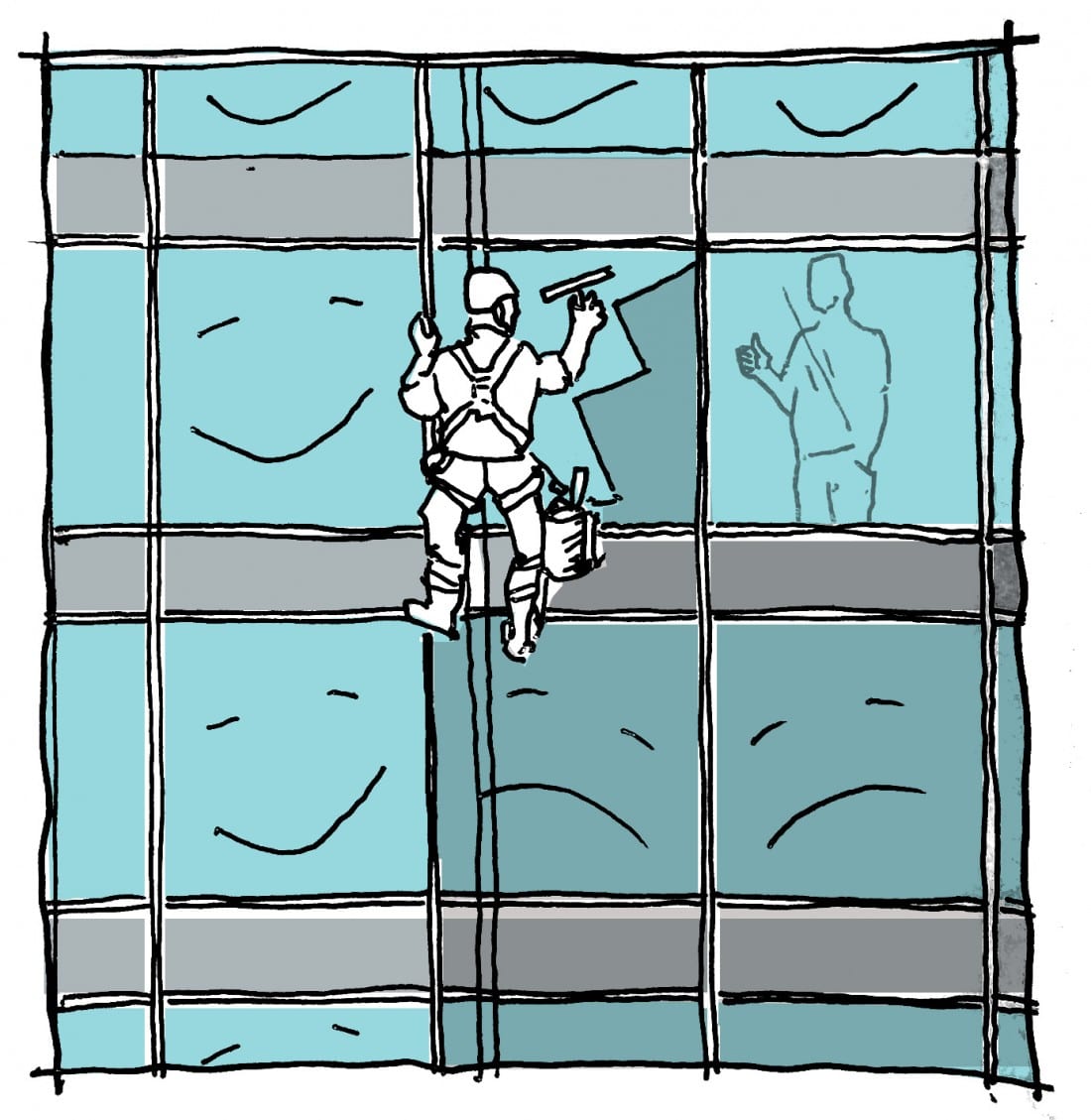Window Cleaning – High Level Overview
 Window cleaning can have a dramatic effect on the appearance of a building, both on the outside and the inside. From the inside, a proper cleaning of the external glass allows more light into individual units. From the outside, clean glass will certainly make the building look much more attractive.
Window cleaning can have a dramatic effect on the appearance of a building, both on the outside and the inside. From the inside, a proper cleaning of the external glass allows more light into individual units. From the outside, clean glass will certainly make the building look much more attractive.
Another issue is window calcium staining. This frequently happens when water with heavier mineral content evaporates on the window, leaving behind a calcified residue that can damage a window (specifically the rubber seals) leading to a premature replacement.
Windows typically should be cleaned once a year. This keeps them looking their best, and avoids any potential for damage. For high-rise locations near the water, an additional cleaning may be required to prevent staining.
Low Rise Window (less than four stories).
Window cleaning is generally separated into two groups: hand cleaning and pole clean (commonly known as tucker pole). Each has their advantages and disadvantages, which apply to specific situations.
Pole Cleaning
This approach to window cleaning involves the use of a long pole with a water brush at the top. Commonly know by the brand name, Tucker pole, an individual can usually reach a window four stories high. This is the most cost effective method of cleaning: very little set up is required for each window. However, it is less effective when there is more resistant accumulation on the glass (such as construction residue), or where access directly below a window is limited (such as due to prominent architectural features or ground brush). For the vast majority of situations, a pole-cleaned window will be indistinguishable from any other method.
Hand cleaning
This usually involves an individual coming within an arms’ length of a window and cleaning it with a squeegee and/or other instrument. All ground floor windows are cleaned this way. However, for second story and above, this is accomplished by a ladder, boom lift or by standing on the buildings features with proper fall arrest gear. This is a much more time consuming process, requiring significant effort to get to each window. However, it is a more thorough clean, and may be appropriate in specific circumstances.
High Rise
 High Rise window cleaning is almost exclusively undertaken through hand cleaning, utilizing one of two access methods: rope access and bosun chair. There are significant differences between the two. Chairs (bosun) are less regulated than rope access, and are significantly less safe. This is because they do not have two constant points of restraint (only one) and lack a self-rescue capability. Moreover they are descent-only systems, meaning the user is very limited in the direction they can move. If they discover an error above or to the side, they often are unable to deal with it and will leave the deficiency.
High Rise window cleaning is almost exclusively undertaken through hand cleaning, utilizing one of two access methods: rope access and bosun chair. There are significant differences between the two. Chairs (bosun) are less regulated than rope access, and are significantly less safe. This is because they do not have two constant points of restraint (only one) and lack a self-rescue capability. Moreover they are descent-only systems, meaning the user is very limited in the direction they can move. If they discover an error above or to the side, they often are unable to deal with it and will leave the deficiency.
Rope Access is becoming the standard cleaning and maintenance method for high rise buildings. Individuals applying this method must have passed one of two industry regulatory programs; IRATA or SPRATT.


They can move up or down, and even laterally when additional ropes exist. This flexibility enables technicians to be significantly more effective at cleaning, as they are able to adapt to changing circumstances.
If your high rise is considering a window cleaning, take some time to look at the options and consider which approach really suits you.[1]
[1] For more information on best practices on Window Cleaning Please Visit
http://servicemaster-vancouver.com/category/exterior-cleaning-services/window-cleaning/

